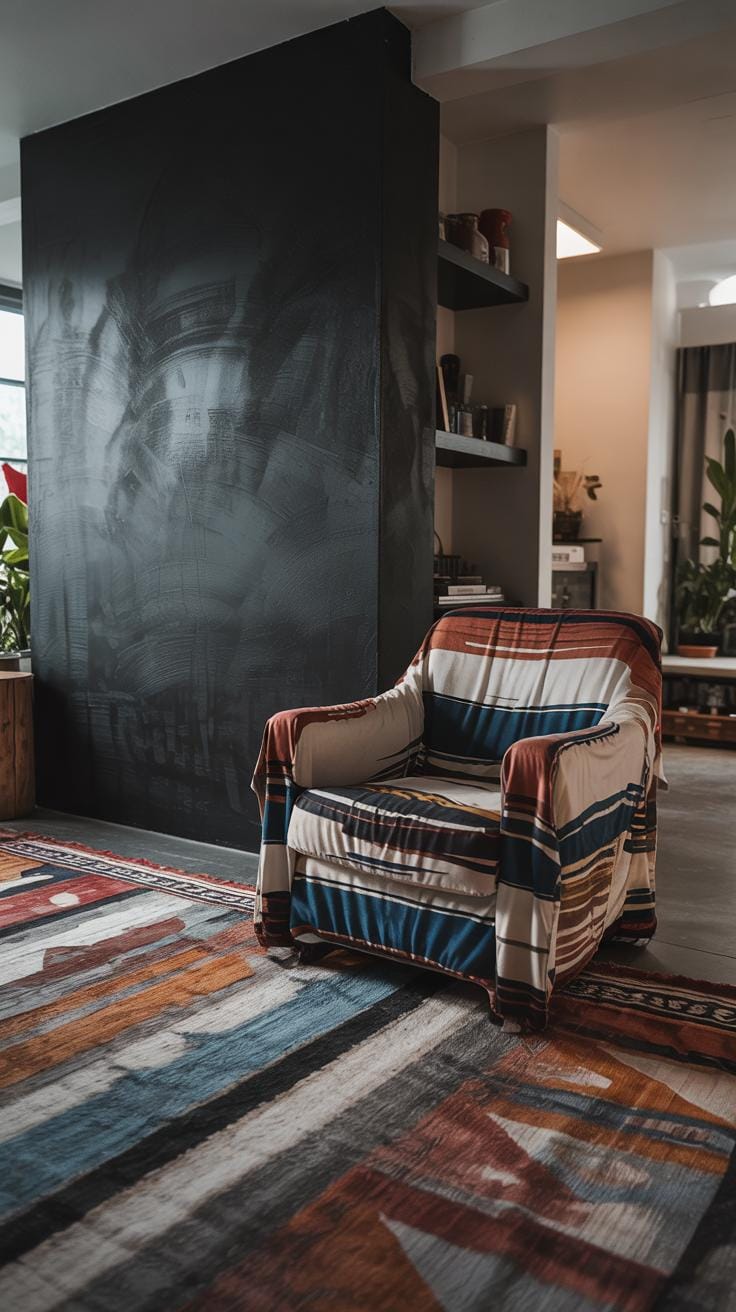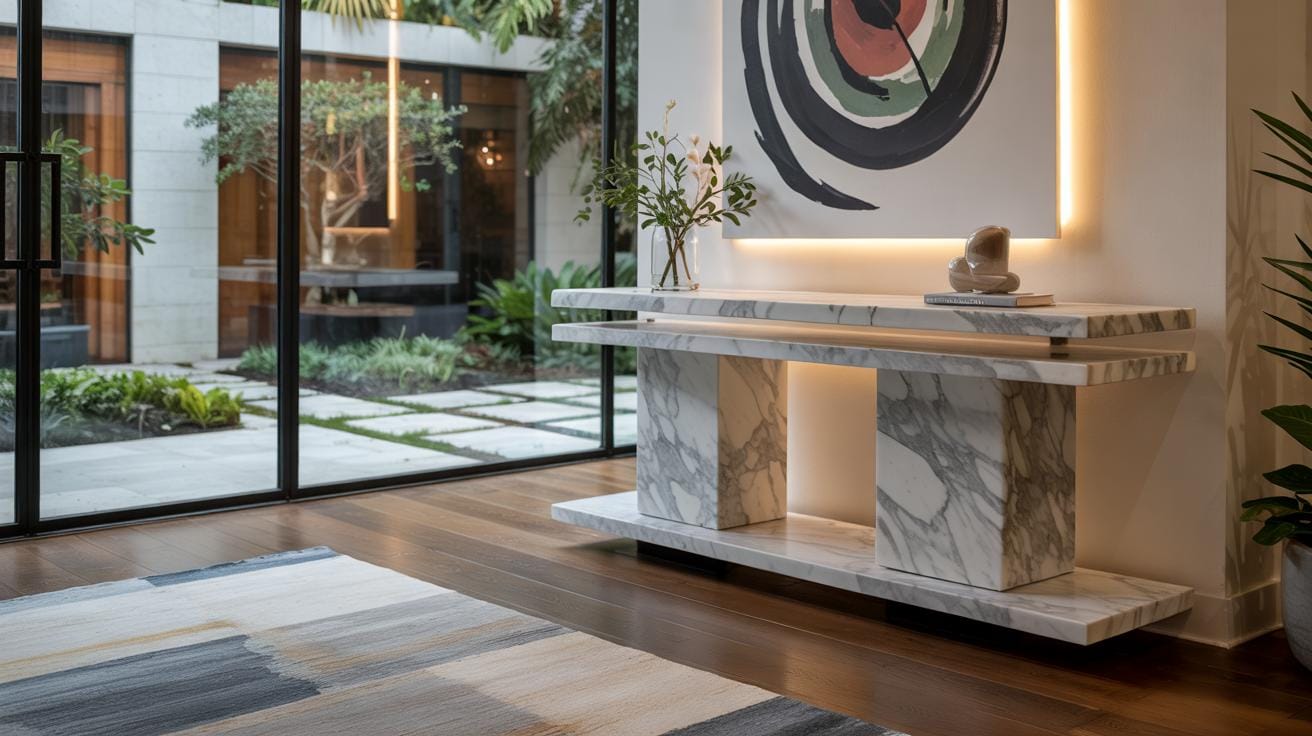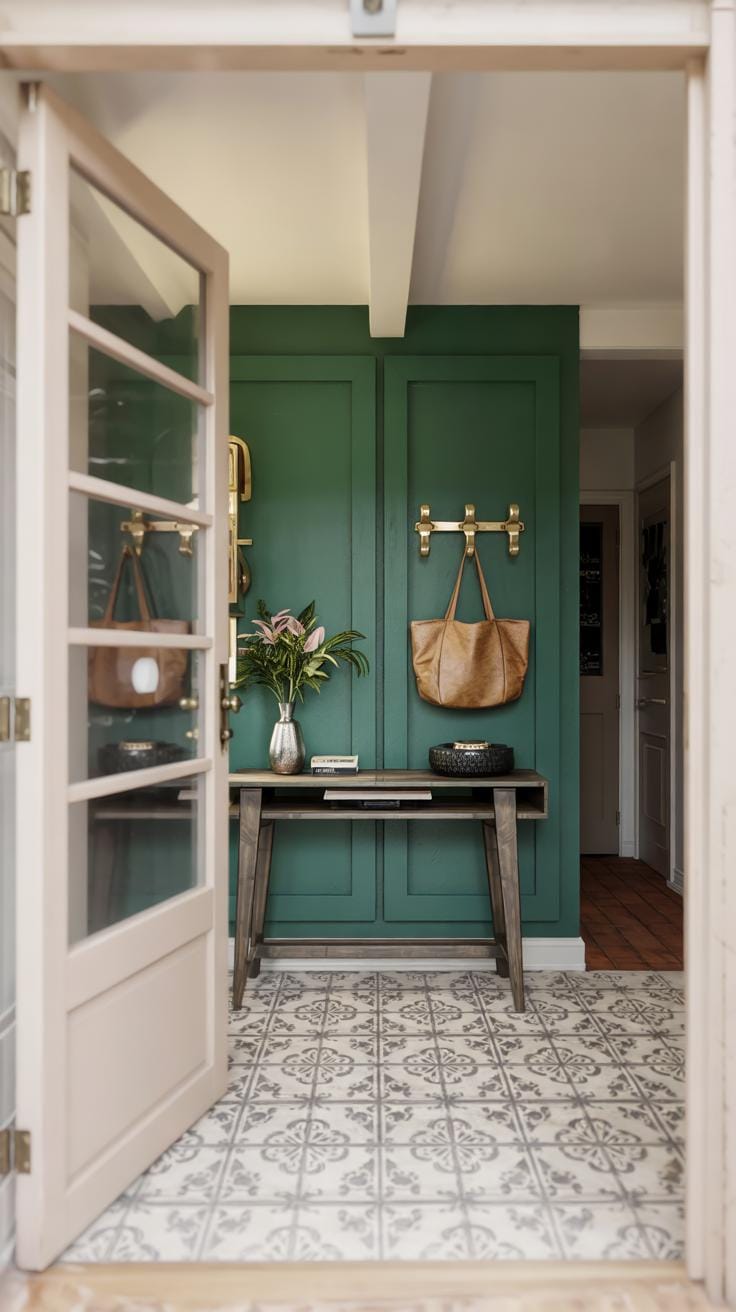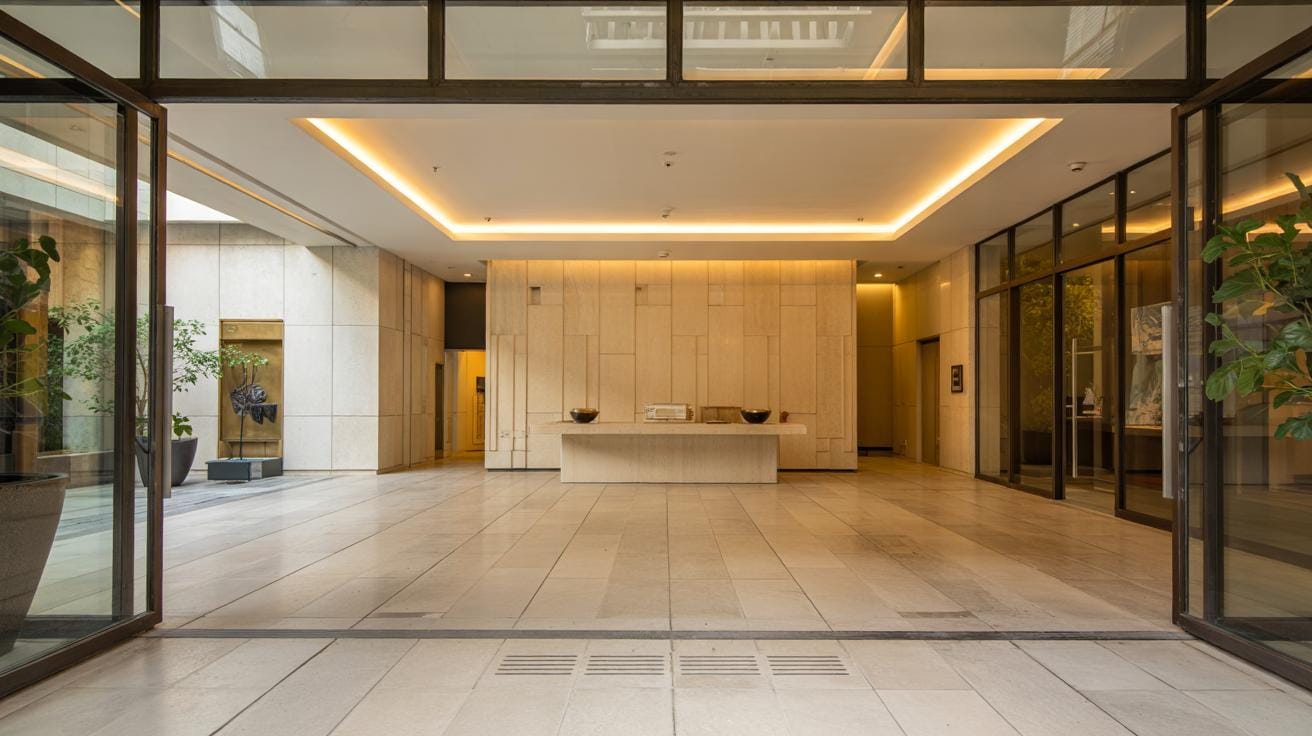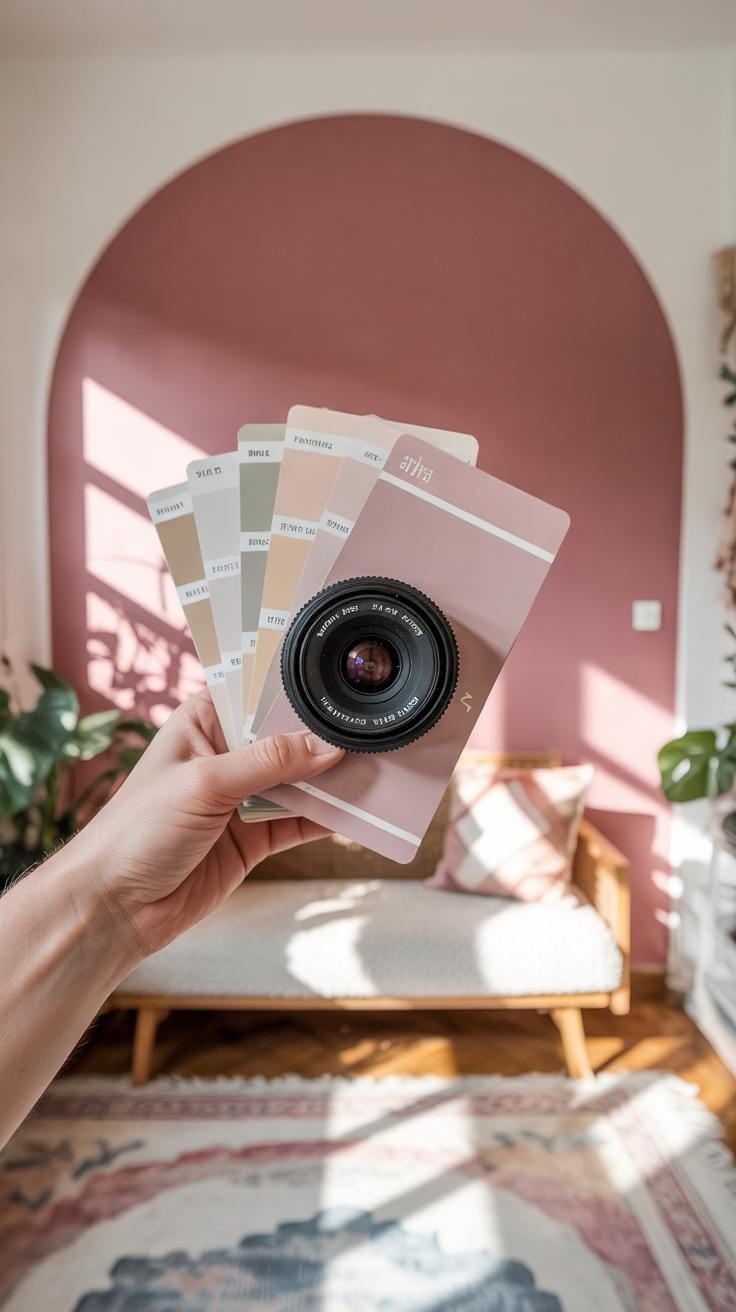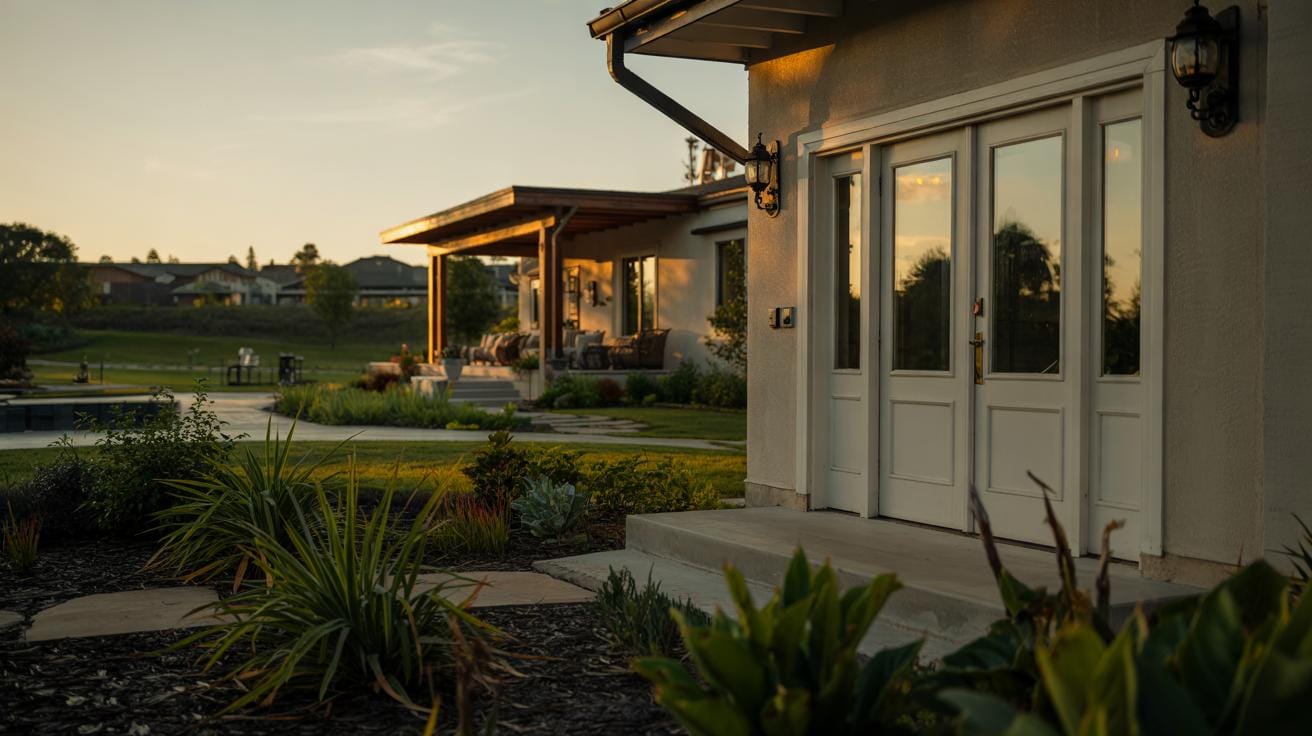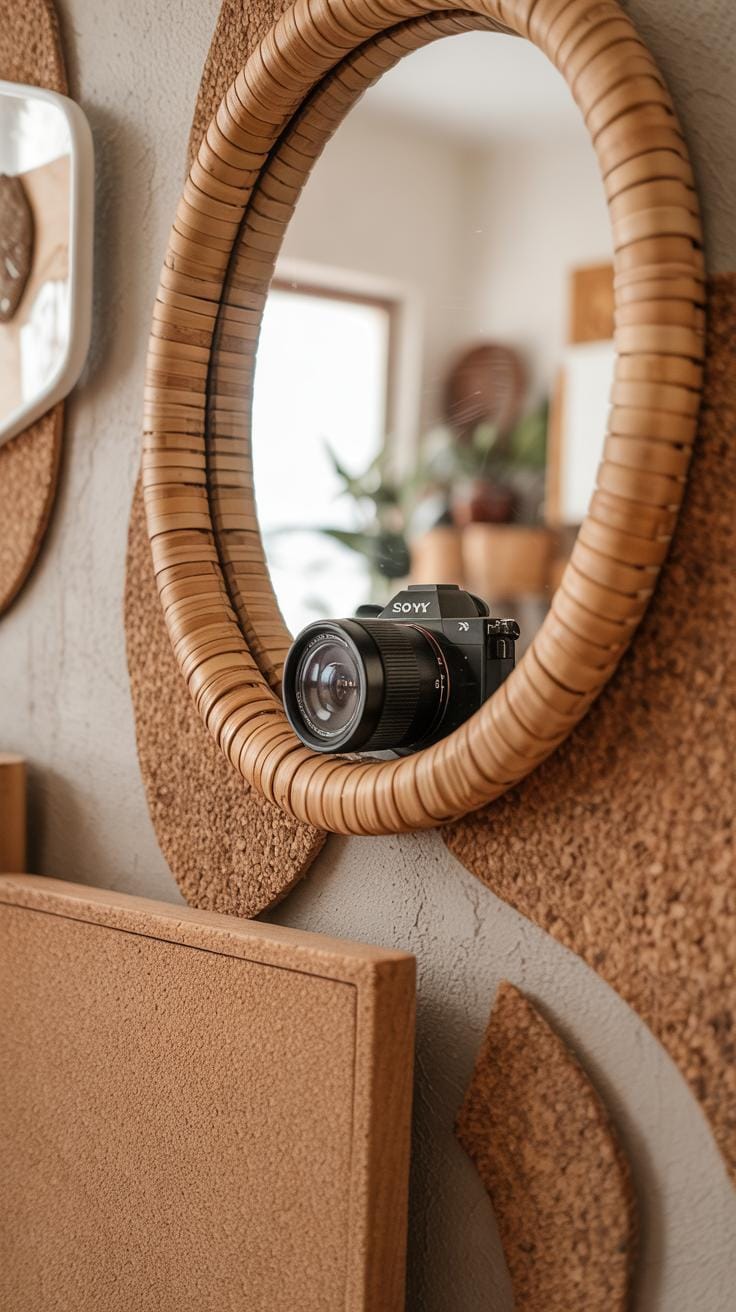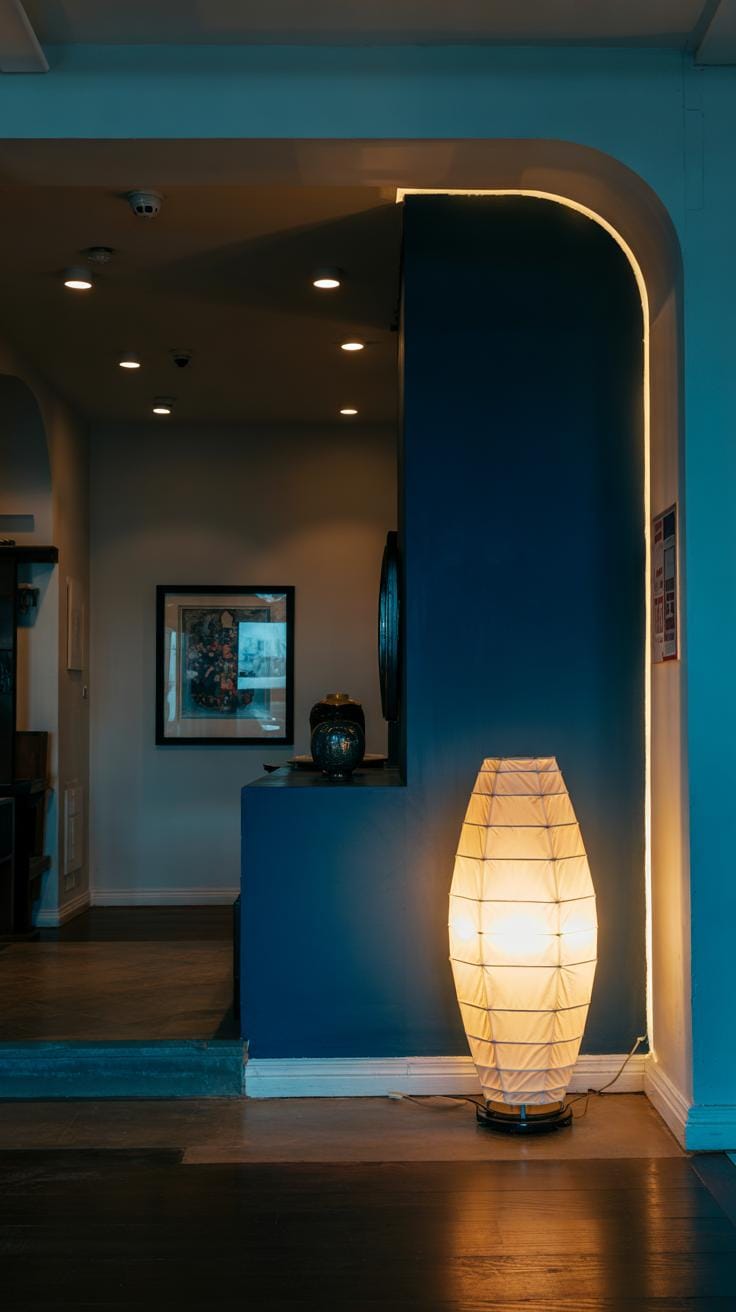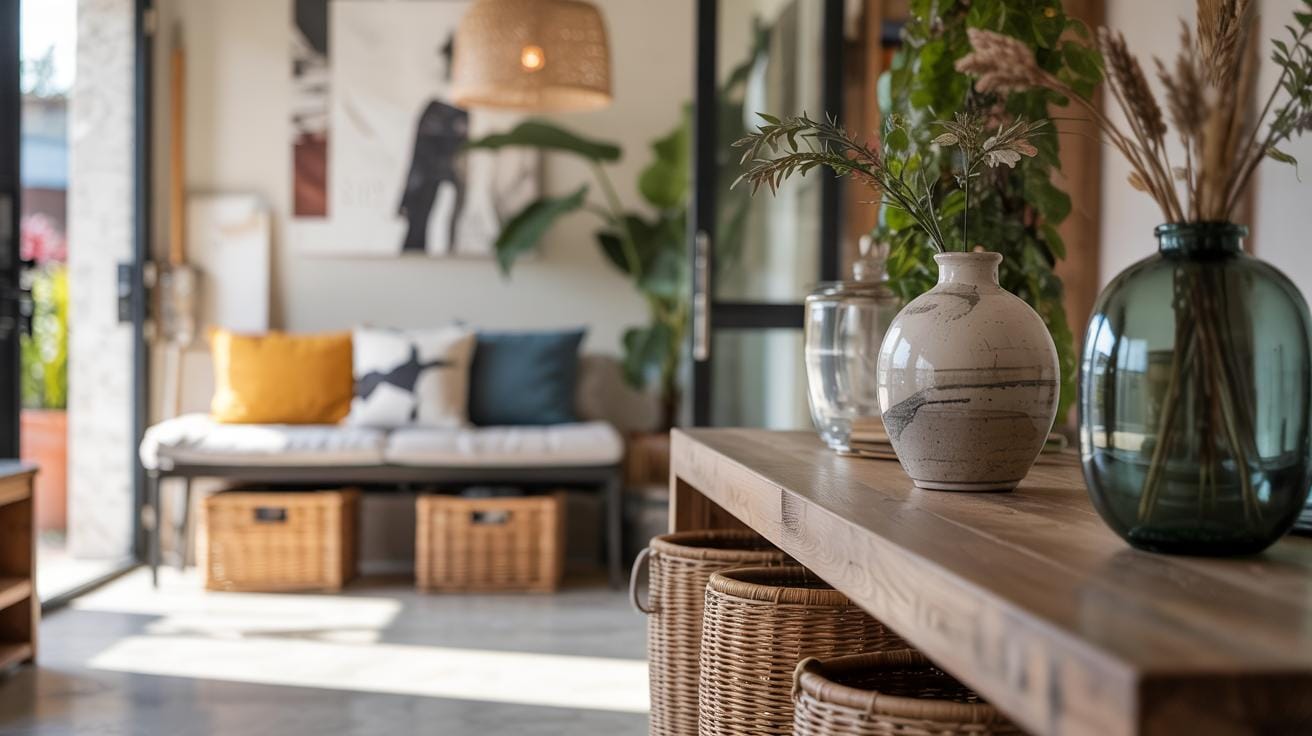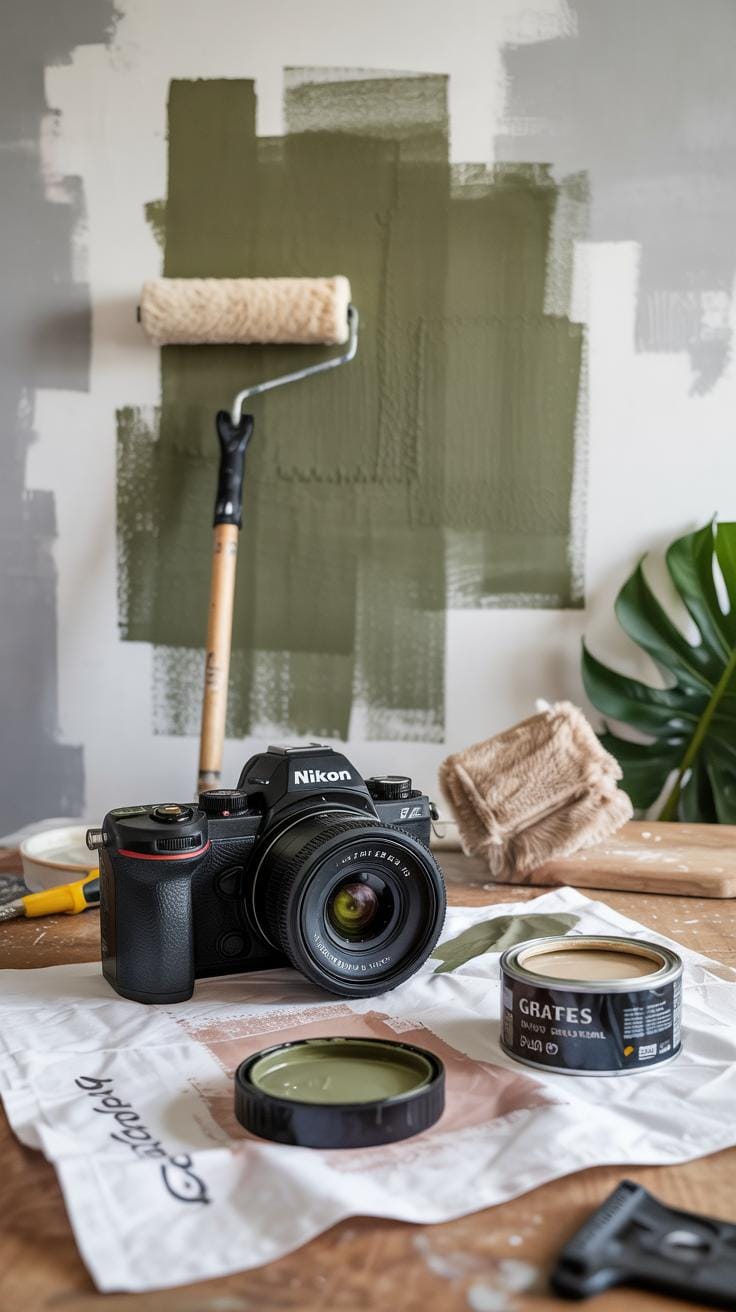Introduction
Highlighting your entryway with an accent wall can transform a simple entrance into a striking visual feature. An accent wall uses a different design from the other walls in the room, adding color, texture, or material variety that catches the eye. This design choice helps to break the monotony and brings focus to the entryway, making it welcoming and memorable.
Your entryway is more than just a passage; it sets the tone for your entire home. Choosing the right accent wall can enhance this space and create a lasting impression. Whether through color, materials, or patterns, you have many options to express style and personality with an accent wall in your entryway.
Understanding Accent Walls
Definition and Purpose
An accent wall is a single wall in a room that stands out from the others. It differs by being more eye-catching, drawing attention to a specific area. Instead of painting all walls the same color, an accent wall uses a different color, pattern, or finish.
The main purpose of an accent wall is to create focus. It highlights a particular part of the room, such as an entryway, fireplace, or seating area. This emphasis adds interest and breaks the monotony of uniform walls. For example, a bold blue wall in an entryway grabs attention without overwhelming the entire space.
Accent walls enhance style without major renovations. You can update a room quickly and affordably this way. They make rooms feel dynamic and give you a chance to express personality. Which wall in your entryway will you choose to highlight? How will that change the room’s first impression?
Design Elements
Accent walls achieve their impact through color, texture, or materials that differ from the rest of the room. Color creates contrast by using a shade that stands apart from neutral or lighter walls. Think of a deep green or warm terracotta wall to set a mood.
Texture can come from plaster, wood paneling, or wallpaper. Textured walls add depth and invite touch, creating a tactile focal point. Materials like stone, brick, or reclaimed wood bring natural beauty and thickness, giving the entryway character.
Each design element you choose changes the feel of your space. A smooth painted wall feels contemporary, while a brick wall feels rustic and grounded. Pairing textures with color increases visual interest. Consider what fits the style of your home and what mood you want your entryway to create.
What kind of surface do you imagine stepping into? How do colors and materials reflect your taste while making the space inviting? Using these design tools thoughtfully will make your accent wall elegant and practical.
Choosing the Right Wall for Your Entryway
Choosing the best wall for your entryway accent starts with identifying one that naturally catches attention. Look for a wall that greets guests as soon as they step inside. This ensures the accent makes a strong first impression.
Natural light influences how colors and textures appear on an accent wall. A well-lit wall brightens your design and highlights details, so consider walls near windows or doors letting in sunlight.
The size of the wall matters too. A wall that’s too small might limit your design options, while a very large wall can handle bold statements. Select a wall where your accent won’t overwhelm the space but still feels significant.
Assess which wall sits closest to the front or main door, since this location invites focus. Also, consider how the wall connects with surrounding areas and if it can serve as a transition point between spaces. Choosing thoughtfully turns your entryway into a welcoming and stylish introduction.
Visibility and Impact
Choose a wall you see immediately when entering your home. This instantly draws eyes to your accent wall and boosts its impact.
An accent wall placed behind a console table or opposite the front door works well. This makes sure visitors notice the wall right away. If the wall is tucked away or hidden behind furniture, the effect weakens.
Try standing at your entry and ask which wall commands your attention. Use that wall for your accent. This simple step maximizes the wall’s power to set tone and style from the moment someone walks in.
Joining Spaces
The wall you choose will naturally flow into nearby rooms like the living room or hallway. Think about how your accent wall complements these spaces.
For smooth transitions, coordinate colors or materials between the accent wall and adjacent walls. For example, if your entry wall features wood paneling, carry a subtle wood tone into the living room for harmony.
Consider if the accent wall appears from other rooms. It should enhance the view rather than conflict with nearby decor. Aligning these areas creates balance and guides guests comfortably through your home.
Color Choices to Enhance Your Entryway
Color plays a key role in shaping the mood of your entryway. Selecting the right hue for your accent wall can energize the space or offer a calm welcome. Colors appeal differently depending on their intensity and tone. Bright and deep shades tend to draw attention and create a dynamic start to your home.
Soft shades promote relaxation and invite a gentle atmosphere. Understanding color psychology can guide your choices. For example, blue often calms, red stimulates, and green refreshes. Think about the mood you want to set every time you or guests walk in. How should your entryway make people feel?
Consider how your chosen color pairs with nearby rooms. Choose colors that create a smooth flow or bold contrasts that highlight your personal style. The right color can turn your entryway into a space your guests remember.
Bold Colors for Statement
Using bold colors on your accent wall makes a strong visual impact. Deep blues, rich greens, or vibrant reds can energize your entryway. These colors pull focus and convey confidence from the moment someone enters.
Consider jewel tones like emerald or sapphire for a luxurious feel. Bright mustard or burnt orange adds warmth and personality. Dark charcoal or black works well if you want a modern, dramatic look paired with light flooring or trim.
Bold colors ask for simpler decorations to avoid overwhelming the space. How can you balance intensity with light and accessories? When you choose a vibrant wall, it becomes the centerpiece of your entryway design.
Soft Tones for a Gentle Welcome
Soft colors create a quiet, inviting entryway. Shades like pale gray, beige, or soft pastels encourage relaxation and comfort. These colors make small or narrow spaces seem larger and brighter.
Pair soft accent walls with natural materials like wood or stone for texture and warmth. Light-colored furnishings and cheerful lighting complement the calm vibe. The result feels open and easy to live with.
Soft tones adapt well to changing decor styles, making your entryway timeless. Which calm shades would make your home’s first impression feel like a gentle greeting? Experiment with color samples to find the one that suits your space best.
Material and Texture Options
Your entryway sets the tone for the entire home, so choosing the right material for your accent wall shapes the first impression. Wood panels introduce warmth and a natural texture that invites comfort. Stone veneers bring ruggedness and depth, suggesting strength and permanence. Wallpaper offers endless patterns and colors that can reflect your style without heavy installation. Brick adds a rustic, urban feel and works well with many decor styles. Paint techniques, like sponging or stenciling, let you customize the look without extra bulk or cost.
Think about how each material affects your space’s mood. Wood and stone feel cozy and grounded, while wallpaper and paint allow more creativity in pattern and color. Do you want your entryway to invite guests with softness or impress with bold textures? The choice of material will guide that feeling and create a memorable entry point your visitors won’t forget.
Natural Materials
Wood transforms an entryway by adding warmth and a rich texture you can feel as well as see. Hardwood planks or reclaimed wood panels bring natural patterns and tones to the wall, making the space feel more welcoming. Stone, whether in smooth marble or rough-cut quarry pieces, introduces rugged texture and a touch of nature. These materials hold up well in busy entryways and offer a timeless look.
Using natural materials connects your entryway to the outdoors. You might mix different shades or finishes of wood to create interest or choose stacked stone for a more dramatic effect. How do you see natural elements fitting into your home’s personality? Wood or stone can ground your entryway in a way that few other materials can.
Wallpaper and Paint Effects
Wallpaper offers patterns and textures that can instantly refresh your entryway. Choose from geometric shapes, floral designs, or textured finishes like grasscloth to add personality. Durability matters since entryways face high traffic. Look for wallpapers with washable surfaces that resist scuffs and dirt.
Paint effects open up many creative avenues. Stripes can make your entryway appear taller or wider, while stenciled patterns add subtle detail. Faux finishes like Venetian plaster or metallic glazes create depth and movement without overwhelming the space. These techniques allow you to tailor the accent wall completely to your style.
Consider your lifestyle when picking paint or wallpaper. Do you want an easy-to-maintain surface that can handle daily wear? Choosing the right finish—like semi-gloss paints for easy cleaning—can keep your accent wall looking fresh for years. What kind of visual impact do you want your entryway to make? The right wallpaper or paint effect can help you achieve that.
Lighting Strategies to Complement Your Accent Wall
Lighting plays a key role in shaping how your accent wall looks and feels. It can bring out colors, textures, and the overall design of the wall, making your entryway more inviting and striking.
Accent lights, sconces, and recessed lighting each serve a specific purpose in highlighting the wall’s features. Placing lights to shine directly on textured surfaces like wood panels or brick enhances their depth. You can use adjustable fixtures to control the angle and intensity, which draws eyes exactly where you want them.
Lighting also sets the mood in your entry. Bright, focused lighting adds focus and energy, while softer glows create a warm and welcoming space. Combining different lighting types allows you to change the atmosphere depending on the time of day or occasion.
Accent and Spot Lighting
Accent and spotlights focus attention on key parts of your accent wall, such as a textured panel or a unique color section. Position these lights above or below the feature, angled between 30 to 45 degrees for best effect.
This lighting prevents harsh shadows and keeps the wall evenly lit. A pair of adjustable spotlights can highlight a painting or architectural detail, making the wall pop when guests enter. Try using LED spotlights for longer-lasting illumination and energy savings.
Experiment with the number of lights to avoid overpowering the space. Think about how the light hits the wall from different angles throughout the day to find the most flattering setup.
Ambient and Decorative Lighting
Soft, decorative lighting adds mood and complements your accent wall’s colors. Fixtures like wall sconces or pendant lights provide gentle illumination and enhance your entry’s style.
Choose sconces with shades that diffuse light to create a cozy glow without overwhelming the wall’s design. Warm-white bulbs work well to bring out natural tones in wood or stone finishes.
Decorative lighting also fills the space with ambient light, tying the entryway together. Consider a small chandelier or a statement pendant that matches your wall’s style for a balance of function and flair.
Have you tried layering your lighting to match different moods or highlight different times of day? Your entryway can be as dynamic as the people coming through the door.
Incorporating Functional Decor
Think about how your accent wall can do more than just look good. Adding functional items like mirrors, shelves, coat hooks, or artwork helps you organize while staying stylish.
Select objects that serve a purpose and add interest to the space. A mirror not only stands out but also reflects light to open up the entryway visually. Shelves provide a spot to store keys, mail, or small plants, keeping clutter off other surfaces.
Choose coat hooks that suit the style of your wall and fit your storage needs. Artwork can show your personality, but make sure it matches the wall’s color and theme to keep the look cohesive.
Ask yourself what you use most when entering your home. How can your accent wall help with those activities? Integrating practical decor ensures your entryway stays welcoming and organized while making a clear style statement.
Mirrors and Artwork
Mirrors transform your entryway by reflecting both natural and artificial light. This reflection expands the space visually, making the area feel larger and brighter. Position a mirror where it captures light from a window or lighting fixture.
When choosing artwork, select pieces that match or complement the accent wall’s colors and overall style. For example, if your wall has cool tones, opt for artwork with blues or greens. Warm walls pair nicely with reds or yellows.
Artwork that ties in your wall’s theme creates a smooth, designed look. Consider using frames that match other finishes in the entryway such as door hardware or furniture. Does your artwork encourage guests to linger and enjoy your space?
Shelves and Hooks
Shelves add both storage and a decorative touch. Use them for keys, sunglasses, small plants, or mail. Keep shelves at a comfortable height to reach easily and avoid overcrowding them with too many items.
Hooks hold coats, bags, or hats, helping to control clutter typically found in entryways. Choose hooks that complement the wall’s design, such as sleek metal for modern walls or rustic wood for farmhouse styles.
Balance the number of hooks and shelves so the wall does not look too busy or sparse. Space between items invites the eyes to rest and keeps your entryway inviting. What practical needs do you have daily? Let that guide your selections.
Maintaining and Updating Your Accent Wall
Cleaning and Care
Cleaning your entryway accent wall depends on the materials you used. For painted walls, dust regularly with a soft cloth and wipe spots gently using a mild soap solution. Avoid harsh cleaners that might strip paint or leave stains.
Wood panels need dusting and occasional polishing to maintain their natural shine. Use wood-specific cleaners and soft cloths to prevent scratches. If your wall uses wallpaper or textured materials, carefully vacuum with a brush attachment to remove dust without damaging surfaces.
For tile or stone accent walls, use a damp cloth with a gentle cleaner to avoid buildup in crevices. How often you clean will depend on traffic levels in your entryway.
Regular care keeps your wall fresh and shows off its style. Does your current cleaning routine protect your wall’s finish properly? Adjust your methods based on your wall’s material to extend its life.
Refreshing Looks
Updating your accent wall doesn’t require major remodeling. Swapping out decor like mirrors, shelves, or artwork instantly changes the wall’s feel. Seasonal decorations can keep your entryway looking fresh.
Repainting the wall is an easy way to shift the mood. Try a new color that matches your evolving tastes or seasonal trends. Using paint specially made for high-traffic areas can keep the surface resilient.
Adding simple elements, such as removable decals or peel-and-stick wallpapers, offers temporary change without commitment. Changing lighting can also highlight different features.
What small change could you make today to keep your entryway inviting? Planning your accent wall with easy updates in mind saves future work and keeps your space stylish without stress.
Making Your Accent Wall a Reflection of Your Style
Your entryway sets the first impression of your home. Using an accent wall to show your personality turns this space into a reflection of who you are. Think about colors or patterns that make you feel comfortable and confident. If you love nature, a wall with natural wood textures or green tones can bring the outdoors inside. For art lovers, displaying a curated gallery of your favorite pieces or photo prints adds charm and story.
Integrate materials that speak to your lifestyle, like sleek metals for a modern touch or soft fabrics for warmth. Ask yourself what feelings you want guests to experience the moment they step in. What parts of your personality do you want to express? Your accent wall gives you the chance to combine beauty with meaning, making it both elegant and personal.
Personal Touches
Adding personal items or colors makes your accent wall truly yours. Consider using a favorite color that isn’t just trendy but one you love and feel connected to. Family photos, heirlooms, or handmade crafts can become focal points on the wall. These elements invite conversations and show visitors your story.
If you prefer minimalist style, a simple yet meaningful object, like a vintage mirror or an antique clock, can add character without clutter. You can also incorporate your hobbies, such as hanging a musical instrument or a collection of books on shelves. How do your personal treasures reflect your values and tastes? Using them here can transform your accent wall into a piece of your life.
Balancing Elegance and Personality
Merging elegance with your unique style creates an entryway that feels polished and welcoming. To do this, choose refined materials or finishes alongside your personal touches. For example, pair a bold color with sleek molding or use subtle wallpaper patterns under a piece of statement art.
Use a limited, coordinated color palette to keep the space cohesive, even when mixing textures or styles. Consider how lighting affects the mood and highlights your design. Can a stylish light fixture add class without overshadowing your personality?
Elegance does not mean removing your character. Instead, it means arranging your style choices with purpose and care. Your accent wall can be a place where sophistication meets who you really are. How will you blend your taste with timeless elements to welcome everyone in a refined way?
Conclusions
Your entryway’s accent wall serves a dual purpose: enhancing visual appeal and defining the space. By choosing materials, colors, and designs thoughtfully, you make this area inviting and stylish. Each choice you make impacts the ambiance and message your home communicates to visitors.
Using accent walls strategically in your entryway allows you to combine functionality with aesthetic appeal. This approach results in an elegant, personal, and practical space. With attention to detail and creativity, your entryway can become a standout feature of your home.


